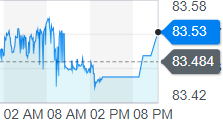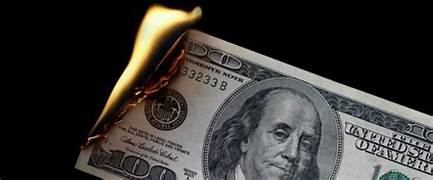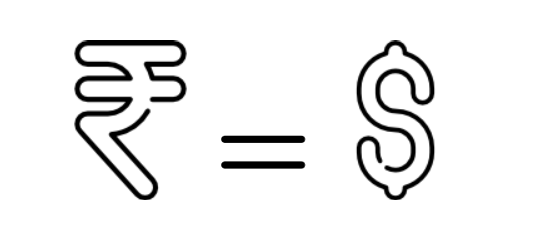Table of Contents
For as long as many can recall, there’s been a collective hope that the Indian Rupee would eventually match the US Dollar in value.
Imagine a 1500 dollar iphone only costs about 1500 rupees? That’s some serious Financial Fantasy

However, reality tells a different story. Instead of narrowing the gap, the Dollar has been on a steady climb, reaching an impressive ₹83.51 in 2024.

Contrary to popular belief, a higher currency value doesn’t automatically mean a stronger economy. For instance, 1 Bangladeshi Taka equals 1.269 Japanese Yen, but Bangladesh’s economy isn’t bigger than Japan’s.
The De-dollarization Trend
With the recession and post-pandemic economic downturn in the West, there’s been a noticeable shift away from the US Dollar, a phenomenon dubbed “de-dollarization.” Many countries are now trading in Euros or Chinese Yuan, and 18 countries have even agreed to trade in Indian Rupees (INR). India’s strong human resource base and growing economy make it a front-runner in this shift.

The Value of the Rupee Over Time
Post-independence, the Rupee was valued at par with the Dollar. However, extensive borrowing and inability to repay debts led to the devaluation of the Rupee. Printing more money increased its supply and naturally decreased its value. Today, $1 equals ₹83, which benefits Indian exports by making them cheaper on the global market. Conversely, imports, especially luxury goods and oil, have become more expensive.

Pros and Cons of ₹1 = $1
Pros:
- Cheaper imports: Luxury goods like iPhones would be more affordable.
- Lower fuel prices: Petrol and diesel would cost less.
- Cost-effective travel and education abroad.
- Lower prices for precious metals and gems.

Cons:
- Exports would decline as Indian products become too expensive.
- Reduced foreign investment due to higher costs.
- Job outsourcing to India would decrease.
- IT and service sector investments would suffer, leading to unemployment.
- Fewer exports would limit resources available for imports.

The Economic Implications
For a growing country like India, being heavily reliant on exports, a high currency value isn’t ideal. Major exporters, like China, keep their currency value low to stay competitive. Similarly, India benefits from a lower Rupee value, boosting exports and sustaining economic growth.

In conclusion, while the idea of ₹1 equaling $1 might sound appealing, it would come at a high cost. Severe unemployment, minimal exports, and economic instability are not worth the trade-off. So, as much as we dream of seeing the Indian Rupee outvalue the US Dollar, the reality is far from ideal for a developing nation.
Exchange Rates Basics
Exchange rates determine how much one currency is worth in terms of another. They are essential for international trade and investment, affecting everything from the cost of imports and exports to foreign investments and economic policies. There are three main types of exchange rate systems:

| Exchange Rate System | Description | Advantages | Disadvantages |
|---|---|---|---|
| Fixed Exchange Rate | The value of a currency is pegged to another major currency (like the US Dollar) or a basket of currencies. This system aims to maintain stability and predictability but requires significant foreign exchange reserves to manage the peg. | – Provides stability and predictability in international prices and exchange rates. – Reduces risks associated with currency fluctuations. | – Requires large reserves of foreign currency to maintain the peg. – Can lead to trade imbalances and loss of monetary policy autonomy. |
| Floating Exchange Rate | The value of a currency is determined by market forces, including supply and demand. This system allows for greater flexibility but can lead to increased volatility in currency values. | – Provides greater flexibility in responding to economic conditions. – Eliminates the need for large reserves of foreign currency. | – Can result in high volatility and uncertainty in currency values. – May lead to speculative attacks and instability in the economy. |
| Managed Exchange Rate | Also known as a “dirty float,” this system combines elements of both fixed and floating rates. The currency value is influenced by market forces but can be adjusted periodically by the central bank to stabilize the economy. | – Balances the flexibility of floating rates with the stability of fixed rates. – Allows for intervention to correct imbalances and stabilize the economy. | – Requires careful and consistent intervention, which can be challenging to manage. – May create uncertainty if the intervention policies are not transparent or predictable. |
Factors affecting currency value include:
- Supply and Demand: High demand for a currency can increase its value, while low demand can decrease it.
- Government Policies: Policies such as interest rate changes, monetary policy, and fiscal measures can impact currency value.
- Economic Indicators: Economic health indicators, such as GDP growth, inflation, and employment rates, also influence currency value.

History of Rupee Devaluation
The Indian Rupee has experienced several periods of devaluation since India gained independence. Key events include:
- Post-Independence Devaluation: The Indian government initially maintained a fixed exchange rate system. However, economic pressures and a growing trade deficit led to the devaluation of the Rupee in the 1960s and 1970s.
- 1991 Economic Crisis: A major turning point occurred in 1991 when India faced a balance of payments crisis. The government was forced to devalue the Rupee and shift from a fixed exchange rate system to a floating exchange rate system, marking a significant shift in India’s monetary policy.
- Impact of Government Policies: Policies such as liberalization and economic reforms in the 1990s aimed to stabilize and strengthen the Rupee. However, fluctuations in global markets and domestic economic challenges have continued to impact its value.
Consequences of Rupee Value Equaling Dollar
The hypothetical scenario of the Indian Rupee becoming equal to the US Dollar has several implications:

- Foreign Investment: A stronger Rupee could attract foreign investment by making Indian assets more affordable. However, it could also lead to a decline in foreign investment if it makes Indian exports more expensive and less competitive.
- Service Sector Implications: The IT and outsourcing industries, which benefit from a weaker Rupee due to lower labor costs, might face challenges. A stronger Rupee could reduce the cost advantage of these sectors, impacting their profitability.
- Employment and Economic Stability: A stronger Rupee could have mixed effects on employment. While it may increase purchasing power and reduce inflation, it could also lead to job losses in export-oriented industries and affect overall economic stability.
Solutions for Currency Exchange Rate Issues
- Reducing Import Dependency: Investing in renewable energy and infrastructure development can decrease reliance on imported goods and energy, reducing the trade deficit and stabilizing the currency.
- Diversifying Industrial Sectors: Expanding and diversifying industrial sectors can reduce reliance on specific exports and enhance economic resilience. This strategy helps mitigate the impact of currency fluctuations on particular industries.
- Economic Growth Impact: Sustained economic growth contributes to a stronger and more stable currency. Fostering economic development through innovation, investment, and effective policy-making supports long-term currency stability.
FAQs
What happens if 1 rupee is 1 dollar?
If 1 rupee were equal to 1 dollar, it would drastically alter global economics. For India, this would mean a huge boost in purchasing power and a major revaluation of its economy. Imports would become cheaper, but exports could become expensive, affecting global trade dynamics. It’s like swapping a small currency for a big one – the impact ripples through everything from trade to inflation.
Why is 1 dollar not equal to 1 rupee?
The difference in value between the dollar and the rupee is due to several factors:
- Economic Conditions: The strength of each country’s economy influences currency value.
- Inflation Rates: Higher inflation in one country can weaken its currency.
- Interest Rates: Higher interest rates can attract foreign capital, strengthening the currency.
- Trade Balance: A country with a trade surplus generally has a stronger currency.
It’s like comparing apples and oranges – different factors contribute to each currency’s unique value.
When was $1 equal to ₹1?
Historically, $1 was approximately equal to ₹1 during the early 1960s. Since then, the rupee has depreciated relative to the dollar due to various economic and political factors. It’s like watching a historical snapshot – currency values can shift dramatically over time.
Is 1 dollar like 1 rupee in the US?
No, 1 dollar is not like 1 rupee in the US. The dollar is stronger and has higher purchasing power due to the strength of the US economy, its role as the global reserve currency, and other economic factors. It’s akin to comparing a premium brand with a local brand – they might look similar in name, but their value and purchasing power are different.
Why is Indian currency so weak?
The Indian rupee’s relative weakness can be attributed to factors like:
- Economic Growth: Slower growth compared to other economies.
- Trade Deficits: India often imports more than it exports.
- Inflation: Higher inflation rates can erode currency value.
- Political Stability: Economic policies and political stability impact currency strength.
It’s like having a less robust engine in a car – various factors can affect performance.
What is the strongest currency in the world?
The strongest currency in terms of value against the US dollar often includes:
- Kuwaiti Dinar (KWD): Known for its high value per unit.
- Bahraini Dinar (BHD): Also strong in value compared to the dollar.
- Omani Rial (OMR): Another high-value currency.
These currencies are like high-end sports cars – they’re valued highly and have a significant presence in the global market.
What is BRICS’ currency?
BRICS countries (Brazil, Russia, India, China, and South Africa) do not have a unified currency. They use their respective national currencies: the Brazilian Real, Russian Ruble, Indian Rupee, Chinese Yuan, and South African Rand. There have been discussions about greater economic cooperation, but no single BRICS currency exists yet. It’s like each member of a team using their own gear rather than a single uniform.
What is the weakest currency in the world?
Currencies that have historically been among the weakest include:
- Iranian Rial (IRR): Known for its very low value compared to the dollar.
- Vietnamese Dong (VND): Also has a low value relative to major currencies.
- Indonesian Rupiah (IDR): Another example of a weaker currency.
These currencies are like low-tier products – they have a lower value relative to others in the global market.
Will INR get stronger?
The future strength of the Indian Rupee (INR) depends on various factors:
- Economic Policies: Reforms and policies that boost economic growth.
- Trade Balance: Improvements in trade balance can strengthen the rupee.
- Inflation Control: Managing inflation effectively can help the rupee.
- Global Economic Conditions: External factors and global economic stability also play a role.
It’s like predicting the performance of a stock – various factors influence its future strength.
Latest episodes
Leave a Reply